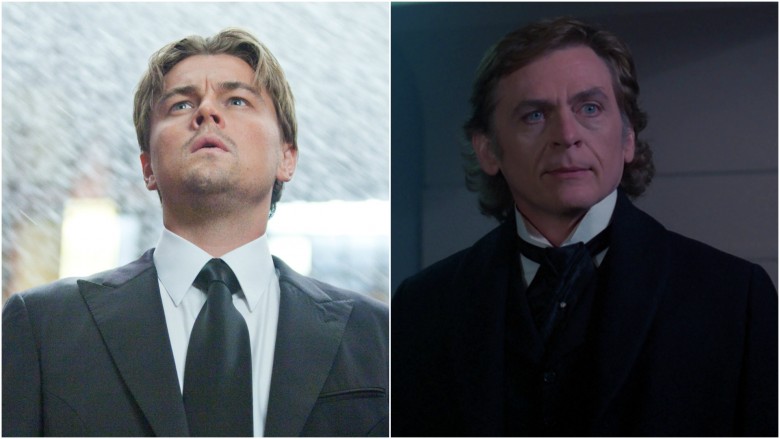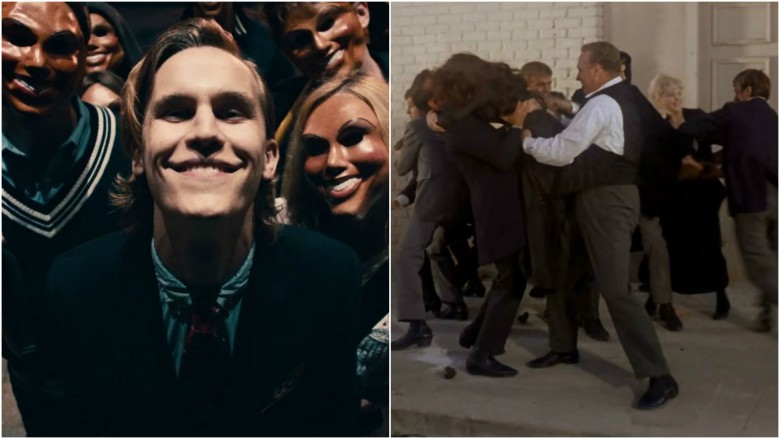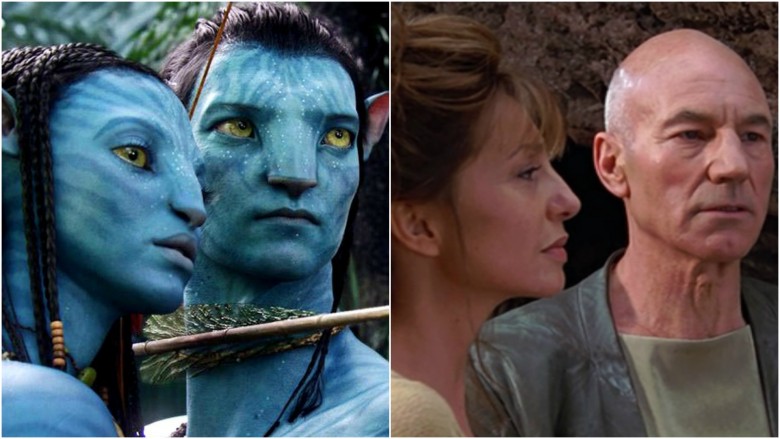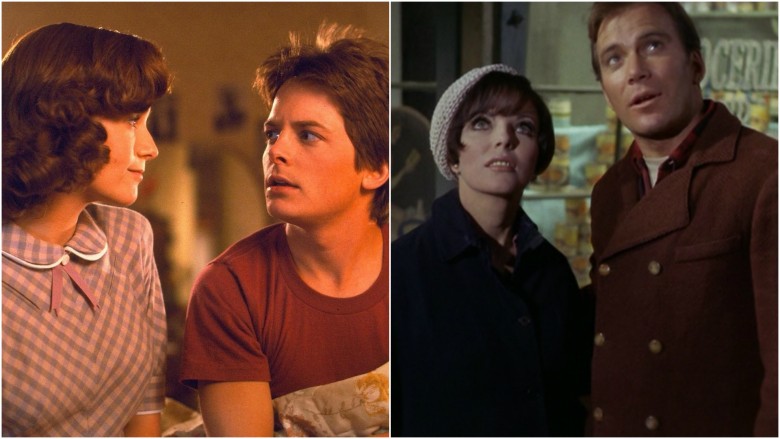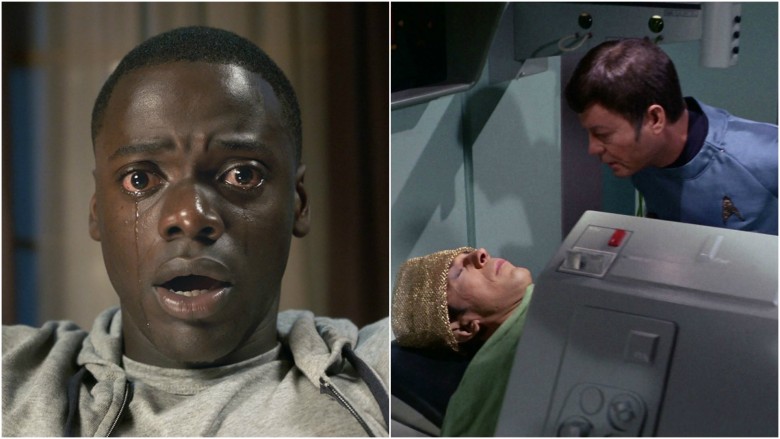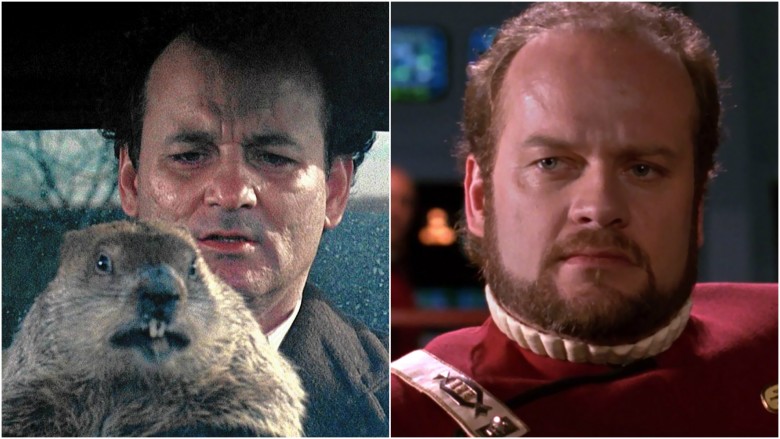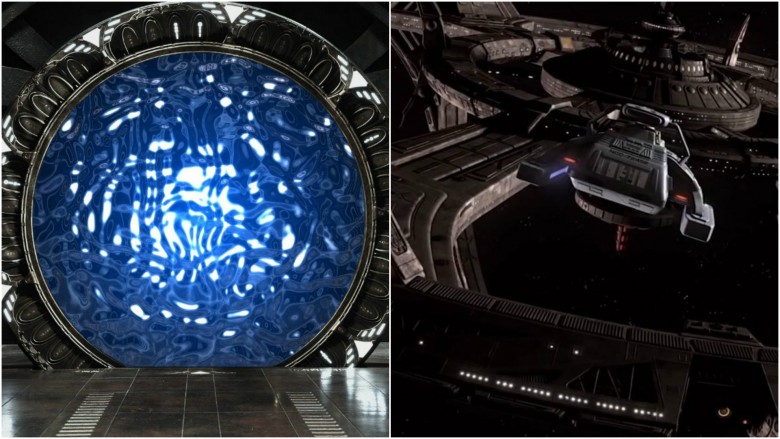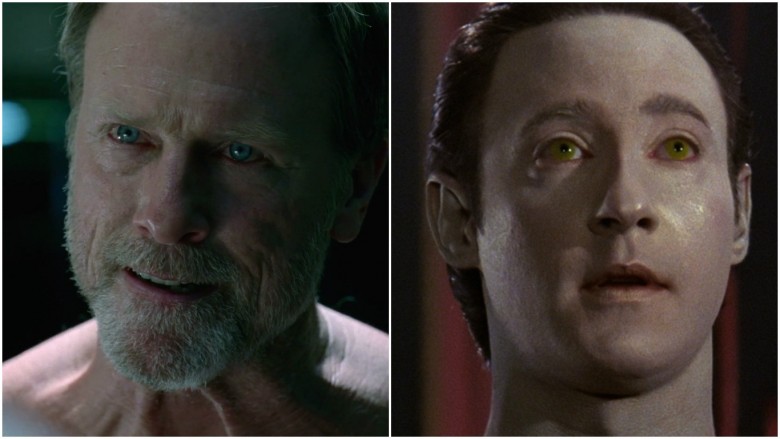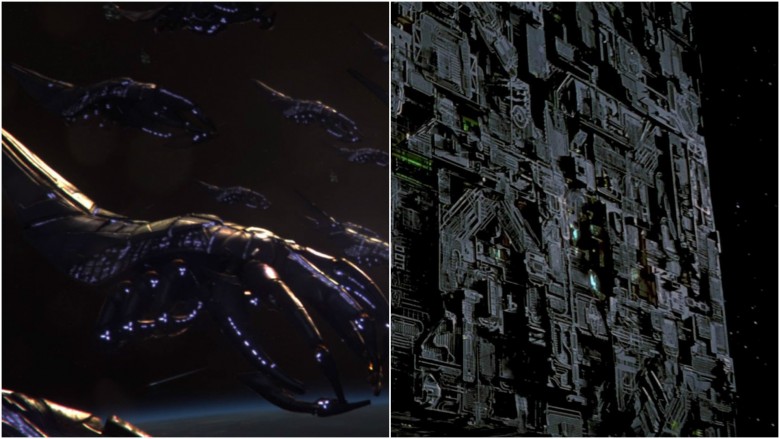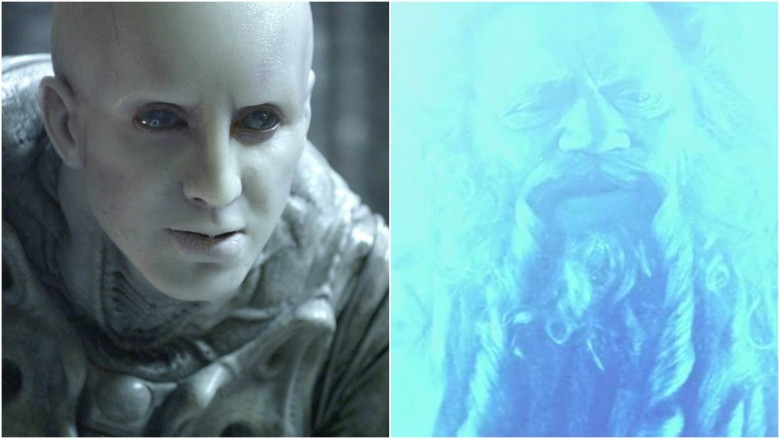Blockbuster Ideas That Star Trek Did First
When it comes to movies, television, and even video games, it's rare to find a truly original idea. It seems almost everything is some kind of sequel, prequel, or reboot. That's why it's so special when a truly fresh concept comes along. However, not all of these "original" ideas are truly unique, as hardcore Star Trek fans can attest.
Star Trek has been going for over 50 years and spans more than 700 episodes and 13 movies. And because of Trek's longevity and ingenuity, it's predicted quite a few movies, TV shows, and video games with eerie accuracy. While the characters and exact details are certainly different, you'd be shocked to learn how many blockbuster ideas Star Trek did first.
Inception (2010)
Inception was a mind-bending movie that explored a world where characters could invade the minds of others via their dreams. After all, it's a great way to steal information. However, when a team of thieves is sent to do the impossible—implant an idea rather than steal one—they end up exploring the nature of time, reality, and consciousness. It's all capped off perfectly by a final scene that cuts to credits before Leonardo DiCaprio's character can determine if he's achieved his happy ending or is merely stuck in a dream.
However, this thoughtful meditation on reality vs. fiction was put on-screen long before Inception. In the Star Trek: The Next Generation episode "Ship in a Bottle," Captain Picard has his second run-in with the Sherlock Holmes villain Moriarty. Moriarty is a holodeck character obsessed with leaving the holodeck. Theoretically, that's not supposed to happen, but the world's greatest criminal mind manages the impossible, astounding the crew. But after a while, Data uncovers the truth. As it turns out, Moriarty never left the holodeck. Instead, he took over the program and trapped Picard, Data, and Barclay inside, with the computer simulating their reality perfectly.
Picard and the crew eventually turn the tide by tricking Moriarty into thinking he's leaving on a shuttle of his very own. In truth, Picard placed their holodeck program in a portable unit that would provide a lifetime of power for his adventures. In other words, Moriarty thinks he's truly alive, but he's really stuck in the dreamworld.
Near the end of the episode, Picard ruminates on the idea that all of them could be living in a simulated world of someone's design, leaving Barclay, like the audiences of Inception, to wonder if he's truly experiencing reality or permanently trapped in a fantasy.
The Purge (2013)
Traditionally, horror movies have played on a sense of isolation, with characters trying to make their way through a haunted mansion or finding themselves trapped in a cabin in the woods. The premise of The Purge, however, is that anyone, anywhere can become the monster. For 12 hours every year, all crime becomes legal, and law enforcement officials allow citizens to do whatever they please. For horror fans, it was a pretty amazing idea, but for Star Trek fans, it was kind of old hat.
In the Original Series episode "The Return of the Archons," Captain Kirk and the Enterprise crew visit a planet named Beta III in search of a lost Starfleet ship. They discover a planet that looks a lot like 19th-century Earth, and it's ruled by the typically iron-fisted dictator Landru. On this planet, Landru is pretty much the law, but the people also have a tradition known as "The Festival." This is a time where Landru deliberately doesn't control the population, allowing them to engage in any sort of destructive violence they desire. It's pretty much The Purge on a planetary scale, decades before the Ethan Hawke movie came out.
Avatar (2009)
When it comes to 3-D sci-fi action, James Cameron's Avatar was absolutely groundbreaking. The movie portrayed a human soldier quite literally going native and then protecting an alien species from the exploitation of their natural resources. Story-wise, however, the story itself wasn't all that revolutionary. Critics have compared the film to movies such as Dances with Wolves and even Pocahontas, but there's also a direct sci-fi antecedent for this movie, 1998's Star Trek: Insurrection.
The plot follows Picard and the Enterprise crew as they visit an alien planet with a startling secret. The entire planet is a fountain of youth, allowing the residents of the world to be immortal. While Picard is content to explore and develop a relationship with one of the residents, a scheming Starfleet admiral plots to steal the planet's power. This forces Captain Picard and his crew to relinquish their Starfleet affiliation and go down to the planet to help the natives face off against a superior technological attack. In other words, it sounds like James Cameron might possibly be a Trekkie.
Back to the Future (1985)
Back to the Future seemed to be a very unique take on the notion of time travel. The plot involves Marty McFly, a high school student who accidentally travels to the past where he runs into his own mother as a young woman. In a truly Freudian twist, she falls in love with Marty instead of his father, which causes some major havoc in McFly's future. Racing against time, Marty is forced to make sure his parents get together because, if he fails, then he'll disappear forever. In order to drive the drama home, Marty is continually checking a family photo that shows his siblings, and eventually himself, vanishing from existence. Of course, if Marty had traveled to the '60s instead of the '50s, then he would've seen this same plot play out on an episode of Star Trek.
The 1967 episode "The City on the Edge of Forever" is widely considered one of the all-time best Trek episodes. This particular tale follows Captain Kirk and company as they encounter the Guardian of Forever, a sentient being that can open portals to any time and place. Unfortunately, Kirk's timing is pretty rotten, as Dr. McCoy is accidentally injected with a powerful drug, causing him to go temporarily mad. Out of his mind, Bones beams down to the planet and jumps through the portal, erasing the Enterprise from reality.
Following McCoy back in time, Kirk and Spock jump through the portal to fix whatever McCoy did to screw up history, and the two find themselves in 20th century America. Similar to Marty with his photograph, Spock has a tricorder that shows two possible futures. There's the "correct" version where a woman named Edith Keeler dies, and then there's the altered version where her activism keeps the US out of World War II long enough for the Nazis to win, thus wiping the Enterprise out of existence. Things get even more complicated when Kirk falls in love with Edith Keeler, forcing the captain make a terrible choice when her life is on the line. So yeah, it's not quite as upbeat as that Michael J. Fox movie.
Get Out (2017)
Get Out was a wildly unpredictable movie. It offered some insightful (and incisive) commentary on the racial divide in America, while leaning into some weird sci-fi territory. As the movie grows more and more horrifying, we learn that a wealthy white couple has been kidnapping black victims and using a combination of hypnotism and surgery to swap aging white people's brains into younger black bodies. It's a pretty shocking discovery, but not as shocking as realizing that Get Out bears a pretty close resemblance to one of the worst episodes of Star Trek.
Specifically, Get Out's revelation seems quite similar to the Original Series episode "Spock's Brain." As you can probably guess by the title, the Enterprise is attacked by a group of aliens that, well, steal Spock's brain. However, the Vulcan is still alive somehow, and the crew must undertake a rescue mission. Soon, Kirk and his comrades find out these aggressive extraterrestrials have placed Spock's brain into a living computer that helps them manage their planet. But rest assured, the Enterprise crew restores Spock's mind, but the aliens are now worried about how they'll survive without the ability to transfer superior brains into better bodies.
Well, they could try using a teacup.
Groundhog Day (1993)
One of Bill Murray's greatest movies, Groundhog Day follows a wry weatherman forced to cover the titular holiday events in Punxsutawney, Pennsylvania. Unfortunately, this wise-cracking crank soon finds himself living the same day over and over again. He's caught in a time loop and must find a way to escape the living hell of going through the same day in an endless cycle. But while Groundhog Day is generally considered one of the greatest comedies ever made, it kind of seems like it was inspired by a pretty iconic Next Generation episode.
Titled "Cause and Effect," this 1992 installment has one of the most unforgettable opening moments in television history. We see another starship suddenly appear and crash into the Enterprise, causing the ship (and all of our beloved characters) to explode. After the opening credits, however, it's back to business as usual. It quickly becomes apparent that the crew is living the same day over and over. At first, the characters don't realize it, but their growing sense of déjà vu after each explosion tips them off that something is wrong. The crew eventually figures out what's going on and finds a way to send a coded message to Data, so when they repeat their disastrous day, he prevents the Enterprise from colliding with the other ship.
The crew is saved, but unlike Bill Murray's character, they don't all move to Punxsutawney. They do, however, get to meet Kelsey Grammer as the captain of the ship that killed them multiple times. So if they're Frasier fans, then maybe the whole time loop thing was worth it.
The Stargate franchise
Directed by Roland Emmerich, Stargate was a Kurt Russell flick that spawned some very engaging TV shows that fleshed out the corners of this sci-fi universe. At the heart of the franchise, there's the idea of a stable dimensional gate to another world. And while Stargate has produced many unique ideas and episodes, the truth is that it cribs from Star Trek quite a bit.
The central premise, of course, riffs on Deep Space Nine. The original discovery of the stargate is special because it's a portal to a distant land...kind of like Star Trek's Bajoran wormhole. In fact, Deep Space Nine was playing with this idea nearly two years before the Stargate movie came out. On top of that, individual episodes of Stargate sometimes seem like homages to Trek. Take "The Broca Divide," for example, where an infection causes the crew to devolve...just like what happens in Next Generation's "Genesis." Another episode, "Brief Candle," features an infection which makes victims grow old at an accelerated rate, similar to 1967's "The Deadly Years" and 1989's "Unnatural Selection." But at the very least, Stargate holds the honor of being the first program to show us MacGyver's adventures in space.
Westworld (2016 - Current day)
Inspired by the 1973 Michael Crichton movie, Westworld was an amazing hit for HBO. The robo-show features a world populated by lifelike androids, but when some of these machines start thinking for themselves, Westworld's human characters begin grappling with tricky issues like the definition of life and the ethics and morality of dealing with an artificial race of people. It digs way deeper into these concepts than the original film, making Westword compelling television, but if we're being honest, The Next Generation has already explored this idea pretty thoroughly.
A fan favorite, Lieutenant Commander Data was a completely sentient android, relatively unique (except for the obligatory evil brother) and the only one of his kind serving in Starfleet. In one early episode, however, a commander named Bruce Maddox wants to dismantle Data so he can learn how to build similar androids.
Understandably, Data isn't thrilled with this plan, especially since he doesn't think Maddox can safely take him apart, figure everything out, and put him back together again. But after Data threatens resignation when he's ordered to go along with the experiment, a trial is held to determine if he's anything more than Starfleet property. Eventually, Picard convinces the judge to rule in Data's favor because it would be utterly immoral for the Federation to create a slave race of sentient androids and treat them as disposable property. Too bad Dr. Ford didn't get that memo.
The Mass Effect series
BioWare's successful Mass Effect video game series has elements from many different sci-fi properties, but if you know where to look, you'll notice quite a bit of Star Trek influence throughout the games. Take the big bads, for example. Known as the Reapers, the villains are huge, living starships able to brainwash their enemies into joining them via a process called "Indoctrination." The Reapers are absolutely obsessed with achieving perfection by absorbing lesser species, and if that sounds familiar, it's because these guys sound very similar to the Borg from Star Trek: The Next Generation. Just like the Reapers, the Borg are a cybernetic race that travel in huge spaceships and assimilate other species into their collective. Why? Well, they're also trying to achieve perfection.
Mass Effect 2 also introduces Commander Shepard to the world of Cerberus, a survivalist group that will go to any amoral lengths to protect humanity's interests. In both motive and portrayal, Cerberus is very similar to Star Trek's Section 31, a secret organization within Starfleet that does some shady stuff to protect the interests of the Federation.
And it's tough to look at the brutal warrior race of the Krogan and not imagine they were inspired by the Klingons, especially when they're given direct Star Trek dialogue. For example, there's one Krogan mercenary that asks, "Exhilarating, isn't it?" Then if you check out Star Trek III: The Search for Spock, you'll hear Kruge say the exact same thing to Kirk under similar circumstances. Finally, while it might be an accident, it's a pretty crazy coincidence that ship engineer Kenneth Donnelly is a Scotsman, just like some other chief engineer we all know and love.
Prometheus (2012)
It's safe to say that Prometheus wasn't quite the movie that many people thought it would be. While audiences expected a relatively straightforward prequel to the first Alien movie, Ridley Scott delivered a beautifully-shot film focusing on humanity, creation, and mankind's place in the universe. The intrepid crew of the movie eventually discovers a race of alien Engineers that are pretty much the architects of humanity. Upon discovering one of these giant-sized guys, the elderly Peter Weyland tries talking with the creature. Specifically, he wants the alien god to keep him from dying, but the Engineer murders Weyland on the spot. It's a grim and gritty vision of meeting God, but it's one that Star Trek predicted in one of its campier movies.
Star Trek V: The Final Frontier is one of those movies that even hardcore Trekkies would rather forget. The movie centers on Spock's crazy half-brother, Sybok, and his attempt to find a planet where God literally dwells. Through a series of manipulations (mental and otherwise), Sybok is able to bring the Enterprise to this particular planet, where he's hopeful that God can provide answers and guidance. Unfortunately, the entity they encounter is primarily interested in boarding their starship. And when Kirk asks why God needs a starship, the being grows and angry and tries to murder everyone in sight. In other words, Prometheus boldly went where Star Trek had already gone before.

